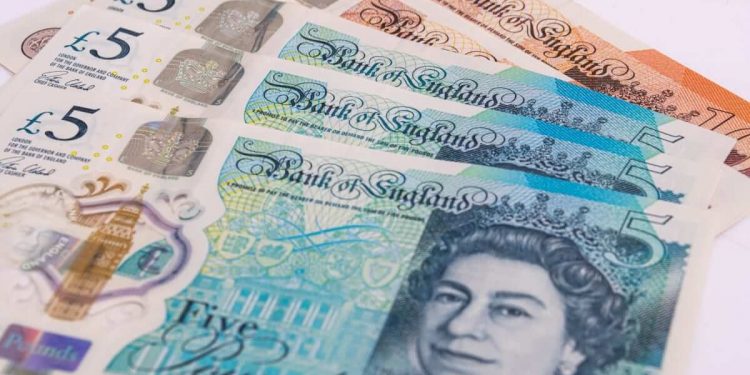The US dollar declined on Friday. How is Sterling trading?
During this session, the US dollar plummeted broadly versus the basket of other major currencies. The US Federal Reserve might cut its interest rates later in 2023. Such rumors, along with the recent problems in the US banking sector, contributed to the greenback’s weakness. However, traders are waiting for the monthly US jobs report, and it might change the dollar’s current trajectory.
The dollar index dropped by approximately 0.15% at 101.23 on Friday. It seemed on track for a second consecutive week of declines. The currency usually rallies when the markets expect hawkish moves from the Fed, but the opposite is true currently. Thus, it’s not surprising that the dollar dipped down. Meanwhile, new problems caused turmoil in the US banking sector. Traders fear that the economy will move in recession and the central bank will have to reverse its hawkish policy.
On Wednesday, the Fed increased interest rates by a quarter point, at the same time hinting that it may pause an aggressive tightening policy. This week, shares of several US regional banks have plunged low with the collapse of First Republic Bank. Los Angeles-based PacWest Bancorp also announced that it plans to explore its strategic options to avoid the same fate.
Chris Turner, the global head of markets at ING, noted that markets are expecting that the banks will tighten credit conditions. That would cause the US economy to slow more than it would in other conditions. However, such a situation might also mean that inflation won’t rise higher, and the Federal Reserve won’t have to continue hiking rates.
How are the British pound and euro faring?
The sterling skyrocketed to its highest peak in nearly a year. At the same time, the euro rebounded after suffering some losses on Thursday. The Japanese yen remained on track for its first weekly gain in almost a month. It also benefited from the traders’ rush to buy safe-haven currencies.
The greenback declined slightly, exchanging hands at 134.19 yen at last. On the other hand, the Japanese currency headed for a weekly gain of more than 1.5% after enduring three consecutive weeks of losses.
On Friday, the pound soared to $1.2633, gaining 0.2% at 87.46 pence per EUR, as well. Meantime, the common currency gained approximately 0.2% at $1.1036. Despite that, it traded below recent one-year highs. On Thursday, ECB announced that it would slow the pace of its interest rate hikes, adding that tightening was impacting the economy negatively. This news pushed the euro lower.
The Aussie dollar and the Kiwi rallied the most on Friday. Each jumped by more than 0.5%, hitting multi-week highs. However, the New Zealand dollar changed the course later.
Asian currencies also traded in the green due to the weakened dollar. Malaysia’s ringgit surged by 0.3% today. Bank Negara Malaysia delivered an interest rate hike unexpectedly on Wednesday, boosting the currency.
Shares in Jakarta dropped by 1.4%, though. They seemed set for their worst sessions since mid-March, even though Indonesia’s economy showed faster growth in the first quarter than economists expected. The rupiah remained flat on Friday.
The post US dollar declined on Friday. How is Sterling trading? appeared first on FinanceBrokerage.






